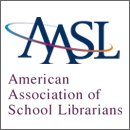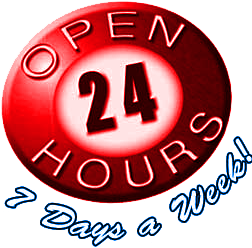 I have just returned the AASL Forum on School Librarians in the Anytime Anywhere Learning Landscape and as usual for this intense two-day institute I am precariously balanced between the excitement of new ideas (and old ones in new guises) and a sense of overwhelm, wondering how I can integrate everything and manage the ongoing learning curve. I was gratified that several of the concepts presented such as the importance of questions and need to teach kids to be open to failure, I had also addressed in previous blog posts. Everything however, was framed in the context of what does it mean to be a 24/7 library—present “Anywhere/ Anytime.”
I have just returned the AASL Forum on School Librarians in the Anytime Anywhere Learning Landscape and as usual for this intense two-day institute I am precariously balanced between the excitement of new ideas (and old ones in new guises) and a sense of overwhelm, wondering how I can integrate everything and manage the ongoing learning curve. I was gratified that several of the concepts presented such as the importance of questions and need to teach kids to be open to failure, I had also addressed in previous blog posts. Everything however, was framed in the context of what does it mean to be a 24/7 library—present “Anywhere/ Anytime.”
The bottom line is in order to be relevant in todays’ world, our resources must always be accessible, and we as librarians are responsible for making that happen. Students and faculty should be able to access your online catalog, databases, and e-reference from whatever is their preferred device. You are always “open” when you are involved in online collaboration with teachers via Google Drive, participate in blended learning with stations for making audio and/or video presentions, Your website and the content you put on it is still another way you are available 24/7. 
But all this won’t make you an intrinsic part of the 21st century learning landscape unless you recognize the importance of being a leader in your building. According to Ann Martin and Kathleen Roberts you need to be able to self-assess, manage people and technology, develop leadership dispositions (attitudes, behaviors, habits of mind, — see the Disposition strand in the AASL Standards for the 21st-Century Learner for examples), communicate effectively (across all types of platforms), and accept responsibility.
Communication is a huge piece of being Anywhere/Anytime. According to keynoter David Warlick, “every 5 seconds there are 417 tweets, 50 new Facebook members, and 120,370 Google searches.” YouTube is the second largest website and the #2 search engine. Outside the classroom, our students are constantly learning by asking questions and exchanging knowledge and skills. They learn complex games without instructions by asking questions and learn to success by getting it wrong. We need to translate this quest for knowledge and the acceptance of “failure” as part of the process into what happens within the library and classroom.
I urge you to check #aasl14 for the conversations that occurred and some of the great links included, one of them being a 15 minute YouTube video covering 15 of the AASL’s Best Websites for Teaching and Learning and Best Apps for Teaching and Learning. The Genius Hour was also mentioned by several participants.
 Some questions we were asked to consider: How can I make this learning environment talk back to the learner? How can it require learners to exchange knowledge? How can I add value for the learner? And some final words from David Warlick as to what our business is,”…it is not just what you you can be trained to achieve, but it’s what you can resourcefully accomplish, and “It is not a ‘Race to the Top’ but it is a joyful exploring, discovering, and inventing The Future!”
Some questions we were asked to consider: How can I make this learning environment talk back to the learner? How can it require learners to exchange knowledge? How can I add value for the learner? And some final words from David Warlick as to what our business is,”…it is not just what you you can be trained to achieve, but it’s what you can resourcefully accomplish, and “It is not a ‘Race to the Top’ but it is a joyful exploring, discovering, and inventing The Future!”
